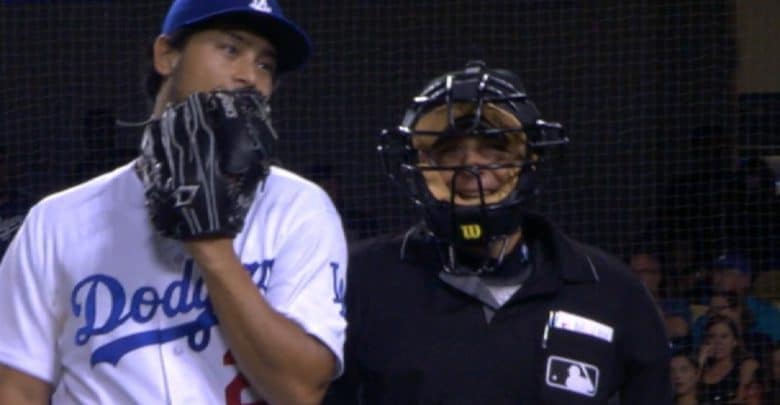
Should Yu Darvish’s Health History Scare Us?
Yu Darvish missed the end of 2014, all of 2015, and a chunk of 2016 because of elbow discomfort and recovery from the dreaded Tommy John surgery. As a result, the Japanese ace hasn’t pitched more than 200 innings since 2013. Despite all that, the Cubs are tied closely to Darvish, even flying to Dallas to meet with the 31-year-old personally. Signing Darvish would require a layout that’s been estimated as high as $160 million over six years ($26.7 M AAV), a commitment many would be uncomfortable with given his injury history.
Since Darvish did pitch successfully after TJS, though, should we really be concerned? Is there anything that jumps out and says “STOP,” or are all signs “GO?” Let’s play a game of red light, green light.
Velocity
Fastball velocity is a logical place to start. Darvish averaged 93.4 mph prior to going under the knife, but when elbow healed and the burly pitcher returned to the mound in 2016, he was pumping four-seams at a 94.9 mph average. Last year with the Dodgers, he was actually averaging north of 95 mph by the end of the year (see image below). If Darvish was showing signs of injury decay, it wasn’t illustrated in his fastball velocity.
Verdict: Green
Mechanics
Next, let’s look at Darvish’s mechanics by comparing his motion in 2014 to that of 2017. One noticeable observation from the GIFs below is the pace at which he fires toward the mound. Both pitches are out of the stretch, which is how Darvish operates exclusively, with the first showing a quicker, more violent move the plate compared to the more recent flow.
2014
2017
Not only is Darvish’s pace to the mound slower, but so too is the time he takes between pitches. With he spaced pitches by roughly 25 seconds prior to surgery, that gap had increased to 27 seconds last year.
Verdict: Green
Release point
Here’s the data that makes me feel a little suspect. Darvish’s release point after being traded to the Dodgers suddenly changed back to his pre-TJS days. Like, immediately.
Whatever the reason for the drastic difference in release point, it’s clearly evident even if you don’t know what to look for. Notice how, for the first time in Darvish’s career, his fastball release point was lower than his slider during August starts last year. Also, notice how his late 2017 release points more closely resemble those from 2014 data points than from 2016.
Likewise, Darvish’s horizontal release point was noticeably different after Los Angeles acquired him. He began throwing with his arm more toward the third base side, similar how he did as a Ranger in 2014.
Overall, Darvish threw relatively more three-quarters as a Dodger, similar to his pre-TJS mechanics.
Verdict: Yellow, about to turn red
Go or Stop?
Darvish’s post-TJS velocity is encouraging, as is the fact that he deliberately made his motion less violent after. What’s not encouraging, though, is his sudden change in release point as 2017 faded. When the Dodgers traded for him, he started to throw with a release point akin to his pre-TJS days. Whether that is just random or an artifact caused by doppler radar differences, coaching changes, or fatigue/durability is unknown. Take that as you like.
Since pitchers naturally make me paranoid, especially ones with an extensive injury history who are requesting upwards of $25 million AAV, I honestly don’t know what to think. Of course, the release point may be nothing because of the aforementioned reasons, and the Cubs surely have better data than our incomplete public tools. If the Cubs do sign Darvish — which, pending price, is something I don’t hate — you’d best believe I’ll be at least a little worried.






